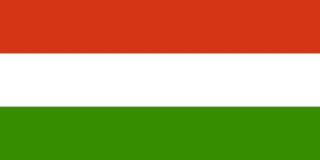Major milestones in Hungarian space era
Although Hungary is a small country, it is still a proud and significant player in the world of space exploration.
Without aiming for completeness, we would like to showcase a few examples of Hungary’s achievements in recent years:
1946
The start of Hungarian space exploration:
• 1st organization related to space exploration: the Hungarian Astronomical Association
• physicist Zoltán Bay - Moon Radar experiment: successfully measuring the distance between Earth and the Moon using radio waves, making Hungary one of the pioneers in space exploration from that year onwards
• physicist Zoltán Bay - Moon Radar experiment: successfully measuring the distance between Earth and the Moon using radio waves, making Hungary one of the pioneers in space exploration from that year onwards
1946
1980
Pivotal year for Hungary’s space endeavors
Bertalan Farkas, the first Hungarian astronaut, flew into space between May 26 and June 3, 1980, becoming the seventh individual from Earth to do so among the world’s nations. His spaceflight was conducted as part of the Soviet space exploration program within the framework of the Soviet Union. He traveled aboard Soyuz 36, which was launched into space under the command of cosmonaut Aleksy Yeliseyev. Bertalan Farkas’ mission held historical significance as he remains the first and only Hungarian scientist-astronaut to have ever participated in space travel. During his journey in space, he conducted numerous scientific experiments, making significant contributions to the advancement of space exploration and science.
1980
1984
Sally Ride, the first American female astronaut, tested the Pille dosimeter on board the Challenger. The main purpose of the Pille dosimeter was to measure ionizing radiation in the astronaut’s environment, and its measurements during her spaceflight contributed to a better understanding of radiation levels in space and improved astronaut safety.
1984
1986
Hungarian participation played a significant role in the missions to Halley’s Comet and Venus spacecraft programs.
1986
1991
Hungary begins its collaboration with ESA
1991
2003
Pille dosimeter is placed on ISS
2003
2007
Hungarian-born Charles Simonyi spent two weeks aboard the ISS, where he conducted scientific experiments, including experiments with the Pille dosimeter.
2007
2012
The first Hungarian satellite, Masat-1, was placed into orbit. A significant milestone in Hungarian space activities is February 13, 2012, when the Masat-1, a fully Hungarian-built picosatellite developed by Budapest University of Technology and Economics, was successfully launched as part of the experimental launch of the European Space Agency's Vega launcher.
2012
2014
The conquest of a comet’s nucleus surface, where Hungarian participation played a crucial role in the development of the Philae lander for the Rosetta spacecraft.
2014
2015
Hungary becomes a full member of ESA.
2015
2018
Since 2018, the tasks related to space activities in Hungary have been carried out by the Ministry of Foreign Affairs and Trade, which has established the Space Affairs Division, led by Dr. Orsolya Ferencz, Ministerial Commissioner for Space Affairs.
2018
2019
Hungary succeeds in launching the first operational 'Pocket Satellite,' the SMOG-P, into orbit.
2019
2021
• Space Strategy, published in the Hungarian Gazette on August 18, 2021. These points outline Hungary's opportunities and directions in the field of space research and space activities.
• The ministry announced the opportunity for the second Hungarian researcher-astronaut to spend 30 days aboard the International Space Station (ISS). The program is officially named 'HUNOR' (Hungarian to Orbit).
• The Hungarian Astronautical Society presented a unique book titled 'Hungary and Space.' This groundbreaking book, complemented with QR codes providing access to online content, explores in great detail the nearly 80-year history of Hungarian space research and industry, showcasing the past and present of domestic space exploration.
• The ministry announced the opportunity for the second Hungarian researcher-astronaut to spend 30 days aboard the International Space Station (ISS). The program is officially named 'HUNOR' (Hungarian to Orbit).
• The Hungarian Astronautical Society presented a unique book titled 'Hungary and Space.' This groundbreaking book, complemented with QR codes providing access to online content, explores in great detail the nearly 80-year history of Hungarian space research and industry, showcasing the past and present of domestic space exploration.
2021
2022
• More than 240 applications were received for the HUNOR Program.
• UniSpace program was launched: bringing together 17 Hungarian universities to launch a three-semester interdisciplinary space science specialization program in four fields: Space Technology Specialist, Innovative Nutrition and Space Health Sciences, Space Science Specialist, Space Policy Advisor Specialist Postgraduate Program.
• UniSpace program was launched: bringing together 17 Hungarian universities to launch a three-semester interdisciplinary space science specialization program in four fields: Space Technology Specialist, Innovative Nutrition and Space Health Sciences, Space Science Specialist, Space Policy Advisor Specialist Postgraduate Program.
2022
2023
On March 7, 2023, the HUNOR Program introduced four astronaut candidates. One of these individuals will have the opportunity to travel to the ISS aboard a SpaceX Dragon spacecraft at the end of 2024 or early 2025. The Hungarian astronaut will conduct research on the International Space Station, and preparations are already underway for various experiments and the equipment needed for those experiments.
2023
Gyula Cserényi (electrical engineer) – Backup Astronaut
Tibor Kapu (engineer) – Astronaut
Tibor Kapu (engineer) – Astronaut


